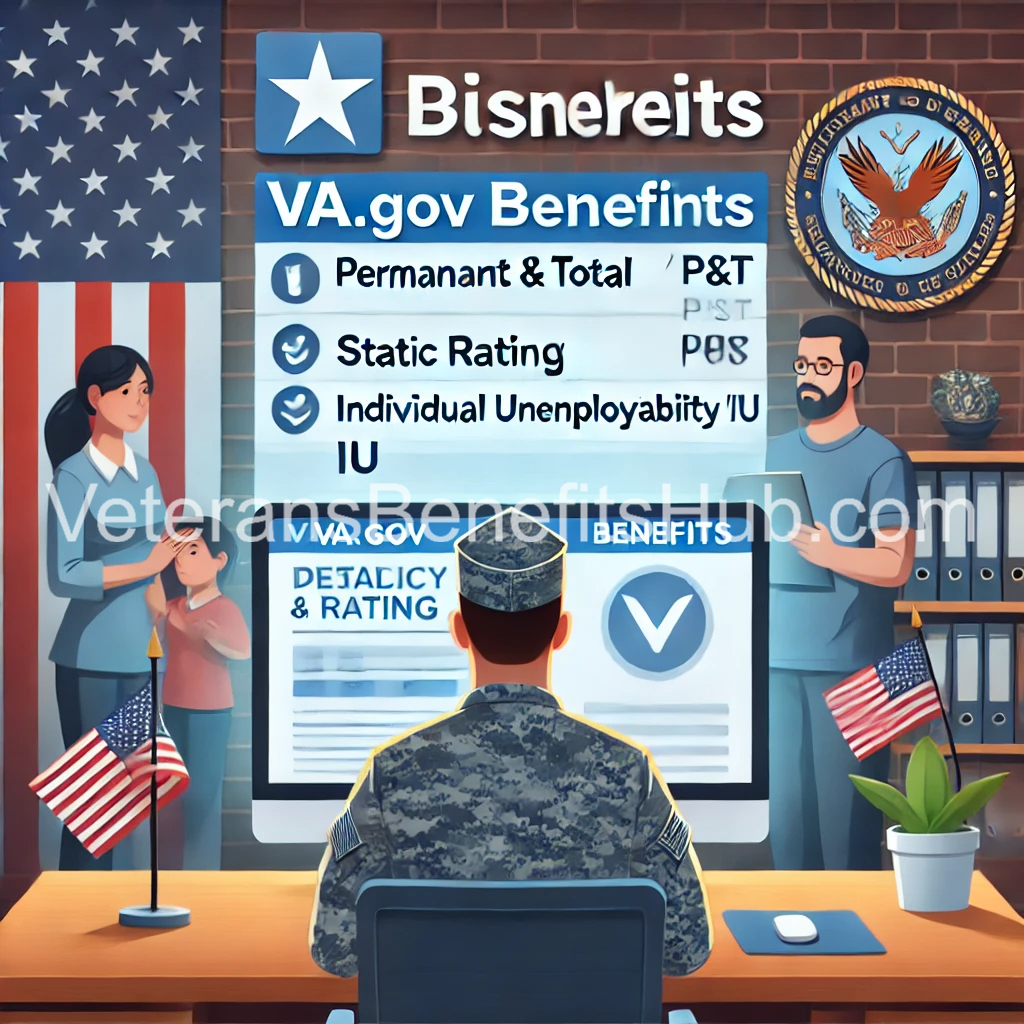Understanding the Difference Between Permanent & Total (P&T) and Static Ratings in VA Disability Claims

One of the most common misconceptions among veterans navigating the VA disability system is the assumption that if all their disabilities are classified as static, they are automatically considered Permanent & Total (P&T). Unfortunately, that is not always the case. In this article, we’ll clear up any confusion about P&T versus static ratings, explain their key differences, and provide official VA resources to verify your rating status.
What Does P&T Mean?
P&T stands for Permanent & Total disability. If a veteran is granted P&T status, the VA has determined that their service-connected disabilities are both permanent (unlikely to improve) and total (rated at 100%). There are two primary ways to qualify:
- 100% Schedular Rating: The veteran’s combined disabilities independently total 100% according to the VA disability rating schedule.
- Individual Unemployability (IU) with P&T: The veteran is granted Total Disability based on Individual Unemployability (TDIU) and classified as P&T because their disabilities prevent them from maintaining substantially gainful employment.
How to Confirm P&T Status
The most reliable way to check if you have been granted P&T status is by reviewing your VA benefit letters. Here’s how:
- Log in to your VA.gov account at VA.gov
- Navigate to the “Manage Benefits” section
- Select “VA Benefit Letters”
- Look for a statement that says: You are considered to be totally and permanently disabled due solely to your service-connected disabilities.
Veterans with P&T status will also see references to Chapter 35 Dependent Education Assistance (DEA) benefits in their award letter. If Chapter 35 is mentioned, it is a strong indication that the VA recognizes your rating as P&T.
For more information on Chapter 35 DEA benefits, visit the official VA page: VA DEA Benefits.
What is a Static Disability Rating?
A static rating means that the VA does not expect your condition to improve, so no future routine re-evaluations are scheduled. However, a static rating does not automatically mean you are considered P&T unless the VA explicitly states so in your benefit letter.
If a veteran’s disabilities are static but they do not meet the 100% schedular or IU criteria, they will not be classified as P&T. Veterans rated at 90% or lower are generally not considered P&T, even if their conditions are static.
How to Check if Your Disabilities Are Static
To determine if your disabilities are static, you can review your VA rating code sheet. This document outlines whether your conditions require Routine Future Examinations (RFE). Here’s how to obtain it:
- Request a copy of your VA rating decision letter from your VA regional office
- Check your eBenefits account at VA eBenefits
- Call the VA at 1-800-827-1000 to request your rating code sheet
If your rating code sheet includes a future exam date, your condition is not considered static and may be subject to reevaluation.
Key Differences Between P&T and Static Ratings
| Feature | P&T Rating | Static Rating |
|---|---|---|
| Permanent? | Yes | Yes, but not guaranteed |
| 100% Required? | Yes | No |
| Subject to Future Exams? | No | No (unless otherwise specified) |
| Includes Chapter 35 DEA Benefits? | Yes | No |
| Can Be Reduced? | No | Rare, but possible if evidence suggests improvement |
Final Thoughts
Not all veterans will be rated 100% P&T, and not all static ratings qualify as P&T. The best way to confirm your status is by thoroughly reading your VA benefit letters and checking your rating code sheet.
Need More Help?
- Visit VA.gov to access your benefit letters
- Learn more about IU and P&T on the VA Compensation page
- Contact a VA-accredited representative for assistance with claims and appeals
Veterans do better when veterans know better. If you found this guide helpful, be sure to subscribe to our updates at VeteransBenefitsHub.com for more expert insights on VA benefits!
